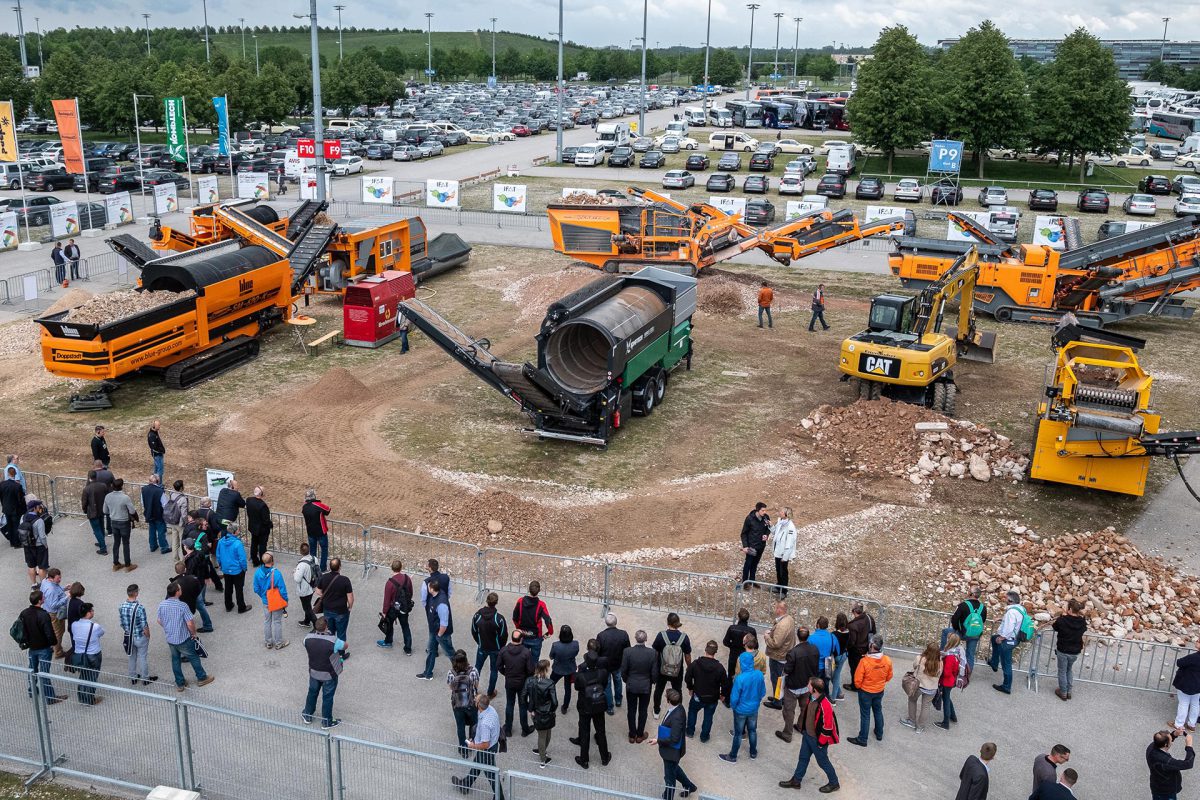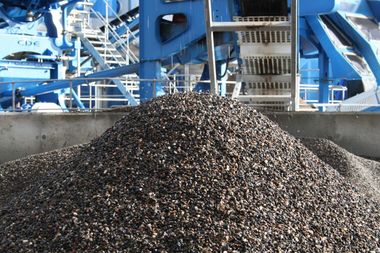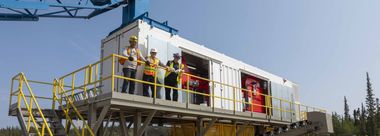For even more circular economy in the construction sector
 Exhibition grounds
Exhibition grounds
© Messe München
Buildings and infrastructure are an important, man-made stockpile of raw materials. And – in line with climate and resource protection – this treasure needs to be uncovered and used. The environmental technology trade fair IFAT in Munich presents both challenges and opportunities arising on this path. A large exhibition sector will show the current technologies for even more circular economy in the construction sector.
Construction rubble, road construction waste, construction site waste as well as soil and stones are the largest waste fractions in Germany. They account for around 60 % of the total volume – more than 200 million tons of construction waste are generated annually. The construction boom, which has been continuing for several years now, “consumes” vast quantities of natural raw materials – and is causing the volume of construction waste to rise further due to increased demolition, dismantling and earthworks measures. At the same time, the possibilities for extracting gravel, sand and rocks are shrinking. And finally, conservation of resources and climate protection are high on the social and political agendas. “All these arguments speak for establishing a circular economy in the construction sector that is geared towards sustainability," emphasizes Stefan Schmidmeyer of the Minerals – Recycling and Recovery Association at the Federal Association for Secondary Raw Materials and Waste Management (bvse).
Demand for recycled building materials too low
The core element of such a circular economy is comprehensive, quality-assured recycling. In fact, most construction waste materials in Germany are already recycled with recycling rates of around 90 %. And according to bvse, recycling companies are working at full capacity. However, the sale of these secondary raw materials has proven to be problematic. “While the input volumes at the recycling plants are increasing, the demand for the building materials they produce remains at a low level,” regrets Schmidmeyer.
At the same time, bvse has observed that the disposal alternative – the filling or depositing of construction wastes – experiences substantial bottlenecks throughout the nation. Schmidmeyer: “It is not acceptable that potential raw materials have to be transported over long distances within Germany or partially even outside Germany to then bury them in landfills.”
In order to produce relief, suitable harmonized, legally binding framework conditions for the use of substitute building materials would have to be installed quickly. Pioneering buildings – especially from the public sector – could also further increase the acceptance of recycled materials. In the field of structural engineering, one of these role models is the environmental station of the city of Würzburg, which was inaugurated in May last year. It is the first building in Bavaria that is three-quarters recycled concrete.
Identifying and removing pollutants
Another task: for good marketability, secondary building materials must be free of pollutants, especially asbestos. “Meanwhile, we have the necessary examination methods to reliably determine asbestos in construction waste,” says Dipl.-Ing. Sandra Giern, Managing Director of the German General Association of Hazardous Material Remediation (GVSS). On the one hand, current guidelines of the Association of German Engineers (VDI) govern the investigation and assessment of asbestos in building structures. On the other hand, they define how even the smallest amounts of asbestos can be detected in rubble. “This creates the basis for identifying and removing contaminants from the economic cycle in a targeted manner already in advance of construction measures. And it is possible to introduce separation criteria for the asbestos content in recyclable construction waste," explains Sandra Giern.
Taking the entire life cycle into account
To further optimize the material cycles in the construction sector, the later usability of the materials used must be considered already during planning. There is still considerable potential thanks to digitalization, because it allows to take into account the entire life cycle of a building – from design and construction to demolition.
IFAT Pavilion and live demonstrations on construction waste
The sustainable handling of waste produced on construction sites has long been a topic at the environmental technology trade fair IFAT. This year, the top-class supporting program at the IFAT Pavilion will be complemented by various live demonstrations in the adjacent outdoor area. The entire building material cycle will be represented, from the detection of pollutants and selective dismantling to the recycling of building materials and the reuse in road and sewer construction.
For example, the Waste Treatment and Recycling Association at the German Engineering Federation (VDMA) organizes the “VDMA Crushing Zone.” At the last IFAT – and under a different name – this show concentrated on solutions for crushing and processing mineral waste. This year, it will additionally include a complex and realistic simulation of the technologies used for the previously required demolition. The general use of building materials is the subject of the demonstration “Sustainable construction of roads, traffic routes and sewers” by the German Association of the Building Industry, and Environmental and Mechanical Engineering (VDBUM).
www.ifat.de





